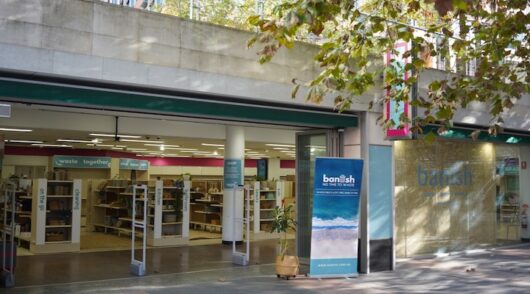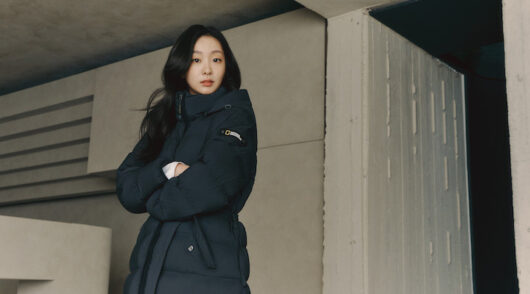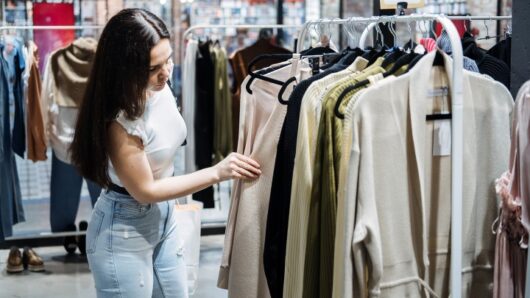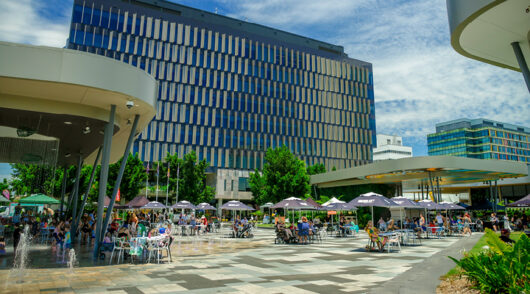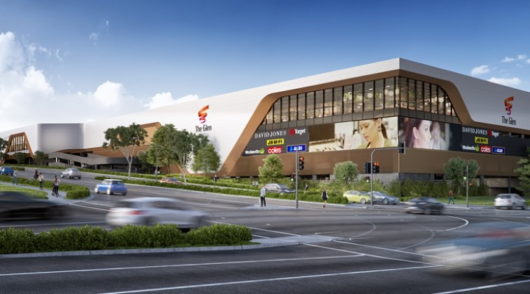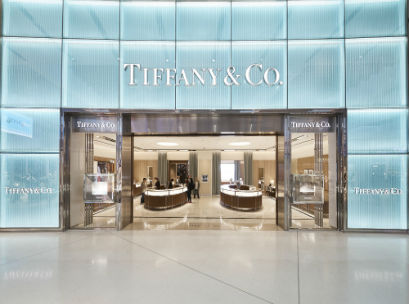 A property firm has proposed a new three-level Tiffany & Co. flagship store as the jewel in the crown of a mooted new luxury shopping precinct in Sydney’s CBD, slated for completion by 2018.
A property firm has proposed a new three-level Tiffany & Co. flagship store as the jewel in the crown of a mooted new luxury shopping precinct in Sydney’s CBD, slated for completion by 2018.
DEXUS Property Group (DEXUS) last week announced that it has lodged a development application (DA) for a new Tiffany & Co. flagship store at 175 Pitt Street, in the Sydney CBD, activating a city retail development opportunity in the property group’s portfolio.
Under the proposal, Tiffany & Co. intends to expand its footprint to cover 2,275sqm of office and retail space upon relocating to the proposed three-storey flagship store in late 2018. The deal will see DEXUS retain Tiffany & Co. in its portfolio after the acquisition of the current location at 39 Martin Place by Transport for NSW for a new Sydney Metro station.
Pamela Medich, DEXUS’s leasing manager for city retail told IRW that the luxury core in the Sydney CBD has undergone a transformation over recent years as more international brands arrive.
“The luxury core has expanded from only Castlereagh Street a few years ago to today taking in George, King and Pitt Streets,” she said. “The relocation of Tiffany & Co. strengthens the appetite for a luxury presence along King Street the same way Louis Vuitton has strengthened the appeal of George Street.”
Medich said the proposed investment by both DEXUS and Tiffany & Co. will add significant prominence to the Sydney luxury retail precinct.
“The maison is the largest for a luxury brand that we have seen in the Sydney CBD to date, which is a show of confidence in the growing strength of the international luxury scene in Sydney and Australia.”
Glen Schlehuber, vice president and managing director of Tiffany & Co. Australia and New Zealand said the new store marks “over 22 years of successful growth in Australia, and Sydney is an important market for Tiffany globally” with the new flagship to be a world-famous centre for luxury, style and sophistication that is “synonymous with New York.”
According to Amanda Pieriboni, head of city retail developments for DEXUS, the overhaul of George Street and increase of APAC investments into Australia underpins the attractiveness of a new luxury sector in Sydney.
“Sydney is a globally positioned city and the luxury brands from around the world see Sydney as important flagship opportunity to showcase their luxury experiences to a growing captive market,” Pieriboni told IRW.
“On any given day, over 600,000 visitors come to the city to shop, be entertained or work, and Sydney enjoys over nine million visitors a year with visitor growth in recent times largely from Asia, particularly China, India and Korea.
“Sydney is undergoing a significant transformation with record levels of investment, from major transport projects, to the George Street pedestrian upgrade, to investment in the residential, commercial and retail sectors. This further opens possibilities for international luxury brands to enter the market.”
Meanwhile down south, Melbourne’s CBD retail core has continued its overall downward trend, recording a vacancy rate of just 3.3 per cent in 2016 and has also experienced an influx of retailer interest, according to Savills latest research.
The number of shops grew from 1,132 to 1,181 over the 12 months, largely due to the opening of St Collins Lane.
Notable debutants to CBD trading included Debenhams which will open its first Australian flagship store (4000sqm) at St Collins Lane in September, joining L’Agent, Kooples and Zadig & Voltaire, while Sandro and Maje, Folli Follie and REISS, Coach, TAG Heuer and Furla have also opened up to trade at the refurbished city centre.
Elsewhere US-based footwear retailer, Foot Locker, leased a prime 600 square metre Bourke Street Mall premises, Michael Hill Jewellers leased 69sqm on the corner of Bourke and Swanston streets, Viva Hair leased 142sqm at 147-149 Russell Street, Connect Hearing leased 124sqm at Centrepoint, and Sushi Hub continued its CBD expansion with a 26 Elizabeth Street lease.
Savills’ associate director research and consultancy, Monica Mondkar, said the continued influx of high profile global fashion brands and the attraction of modern retail hubs was also attractive to both tourists and Melbourne’s suburban population.
“The number of new and refurbished retail precincts and the continuation of the influx of high profile global brands has no doubt accounted for a significant part of the increase in spending, attracting thousands of new shoppers to the CBD,” Mondkar said.
“With the resident population alone expected to grow by 14 per cent by 2020 we are going to see the vacancy rate remain low over the medium term.’’
This story first appeared in last week’s Inside Retail Magazine.
Access exclusive analysis, locked news and reports with Inside Retail Weekly. Subscribe today and get our premium print publication delivered to your door every week.

